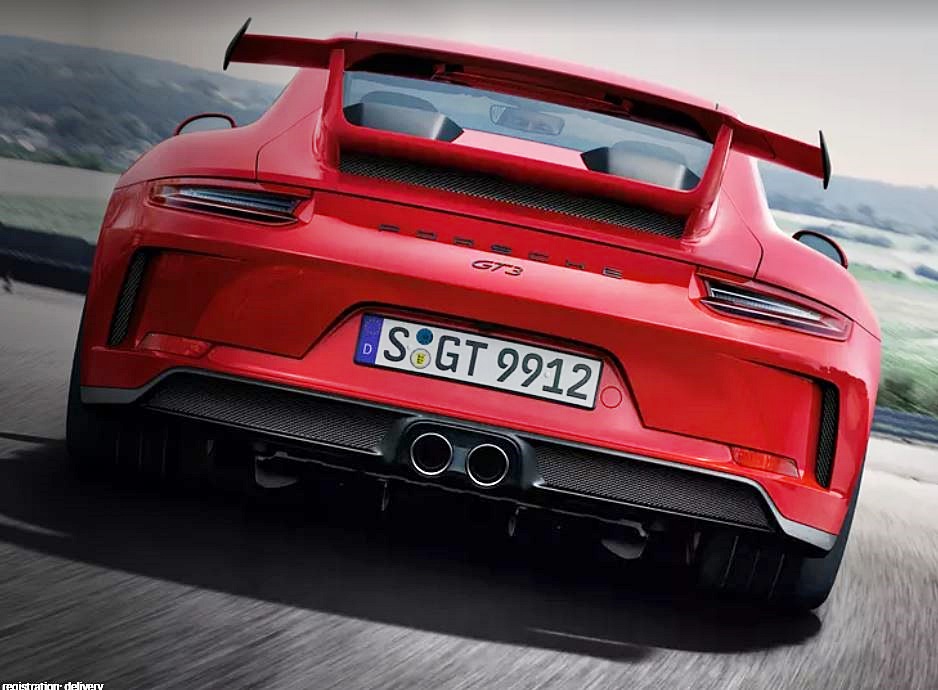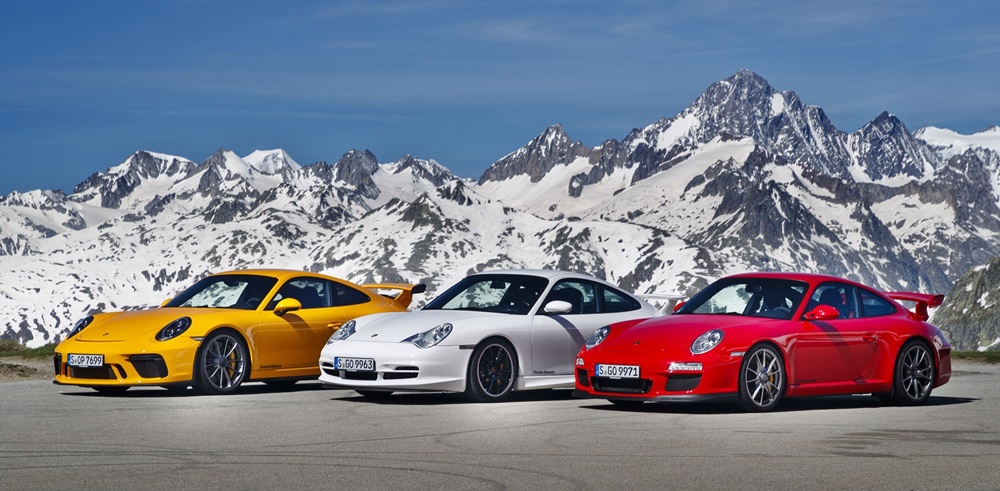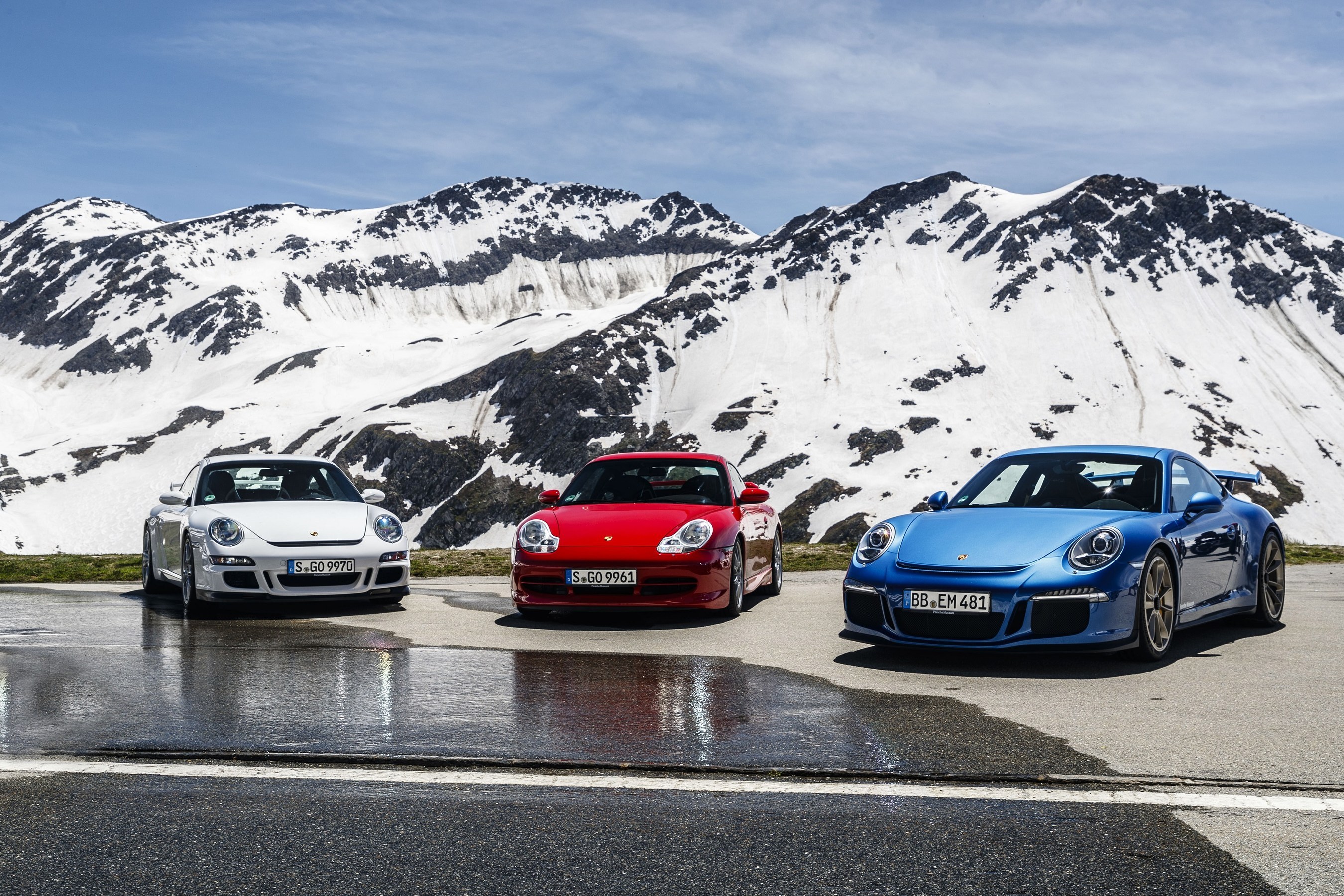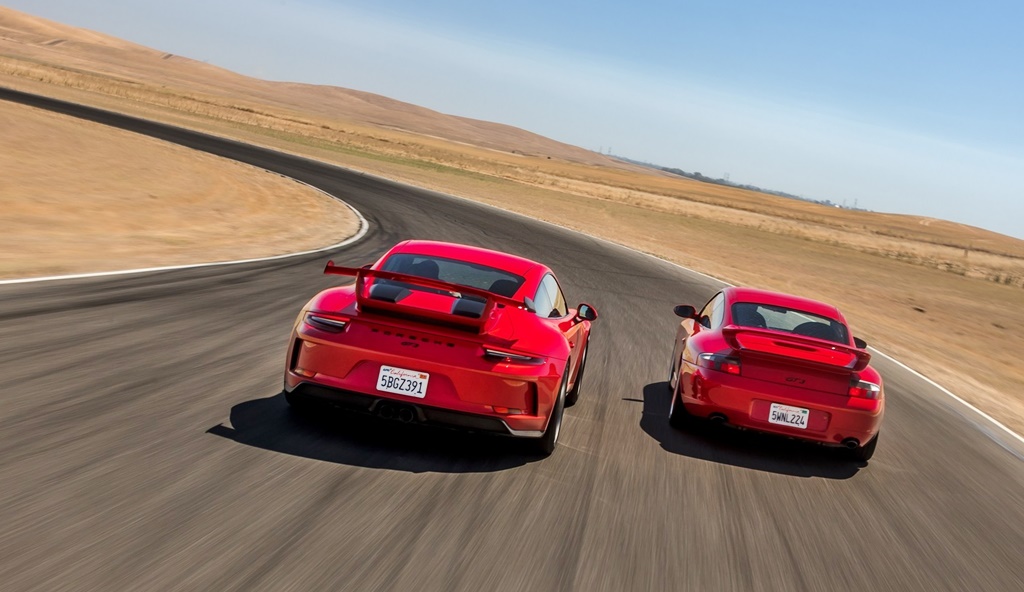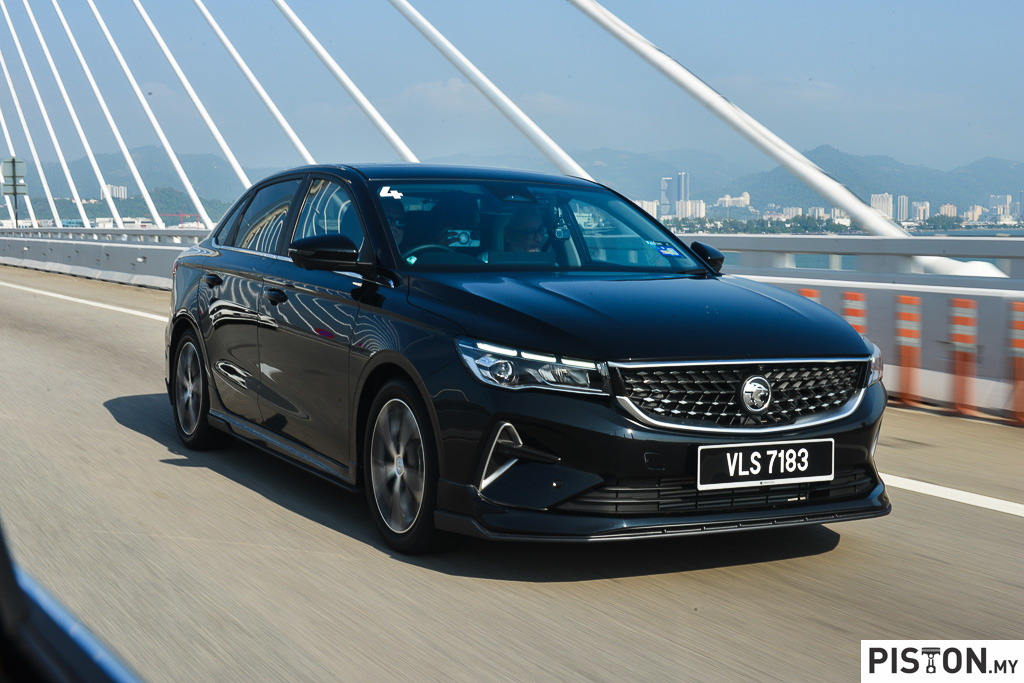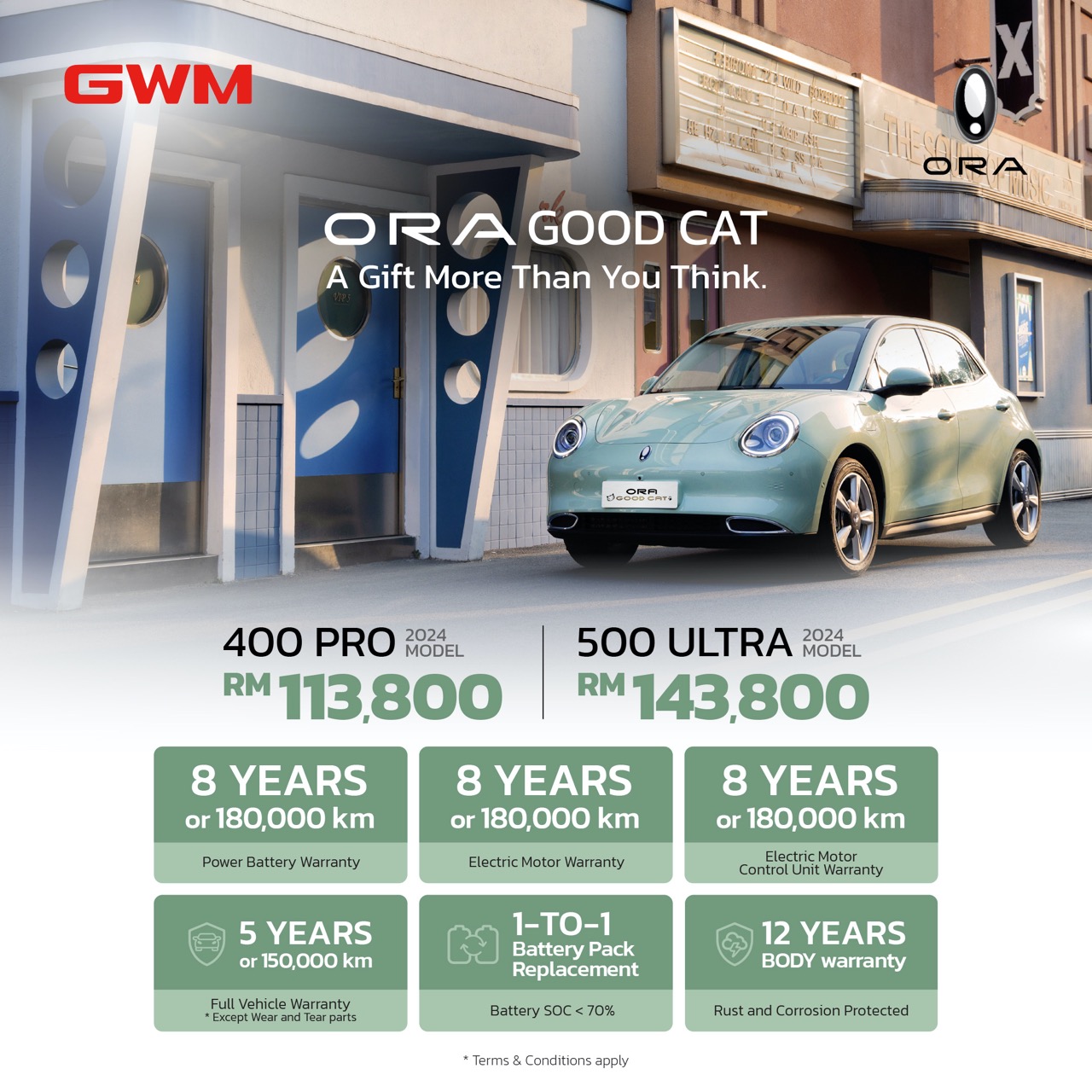20 years ago, Porsche introduced a new 911 variant that it designated ‘GT3’. The designation was taken from a class of endurance racing cars, indicating that this was a variant focused on track performance. Porsche promised a particularly visceral driving experience by offering motorsport technology for the road.
A high-revving naturally-aspirated flat-6 engine closely related to the engine used in motorsports, rear wheel drive, lightweight construction, upgraded aerodynamics and track-focused suspension and brake systems have been defining characteristics of this model throughout its 20-year history.
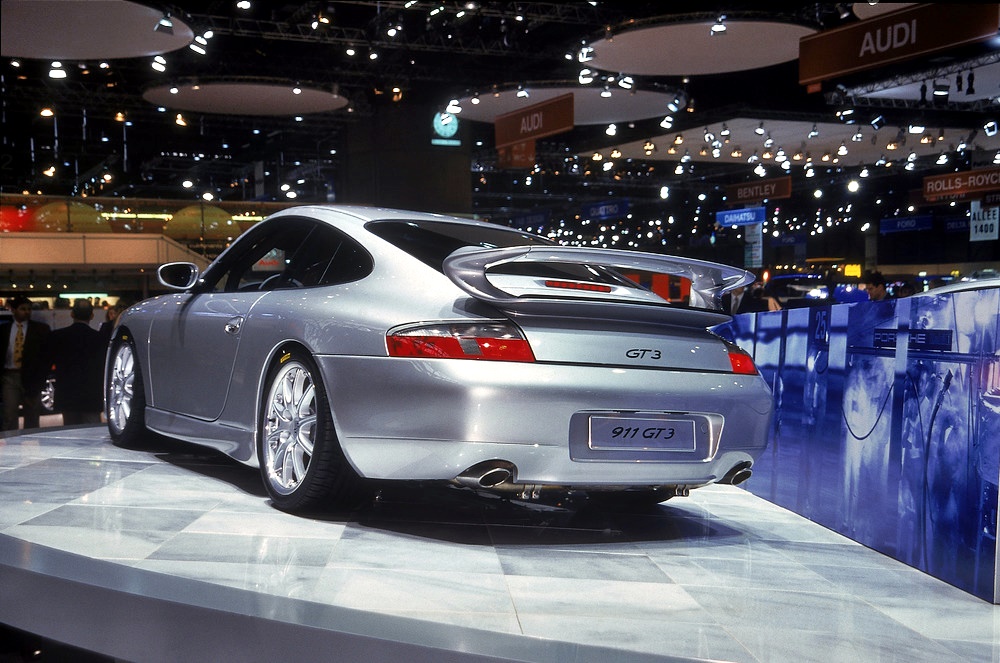
The beginnings
The first 911 GT3 model was introduced to the European market in 1999. It was one of the first production cars to officially lap the legendary Nurburgring-Nordschleife in less than 8 minutes. The rally legend Walter Rohrl was at the wheel and took just 7:56.33 minutes – a sensation at the time.
The car distinguished itself from rear-wheel drive 911 Carrera models through a 30-mm reduction in ride height, pronounced front fascia, visible side skirts and a fixed rear wing – all designed to reduce lift while still delivering a very efficient 0.30 Cd. The angle of attack of the rear wing was adjustable for use on closed-course tracks.
The original GT3 was powered by a 360 ps 3.6-litre naturally-aspirated flat-6 engine derived from the Le Mans-winning 911 GT1 racing car and it revved up to 7,800 rpm. Mated to a 6-speed manual transmission carried over from the 911 GT2 (993 generation), the first GT3 reached a top track speed of 300 km/h.
The track-focused model also featured staggered 18-inch wheels and tyres, larger brakes compared to the 911 Carrera, a standard limited slip differential, and an upgraded suspension that allowed for greater mechanical adjustment of anti-roll bars and suspension geometry for closed-course track setup. Taking advantage of weight savings measures such as the deletion of air-conditioning and rear seats, the GT3 weighed just 1350 kgs.
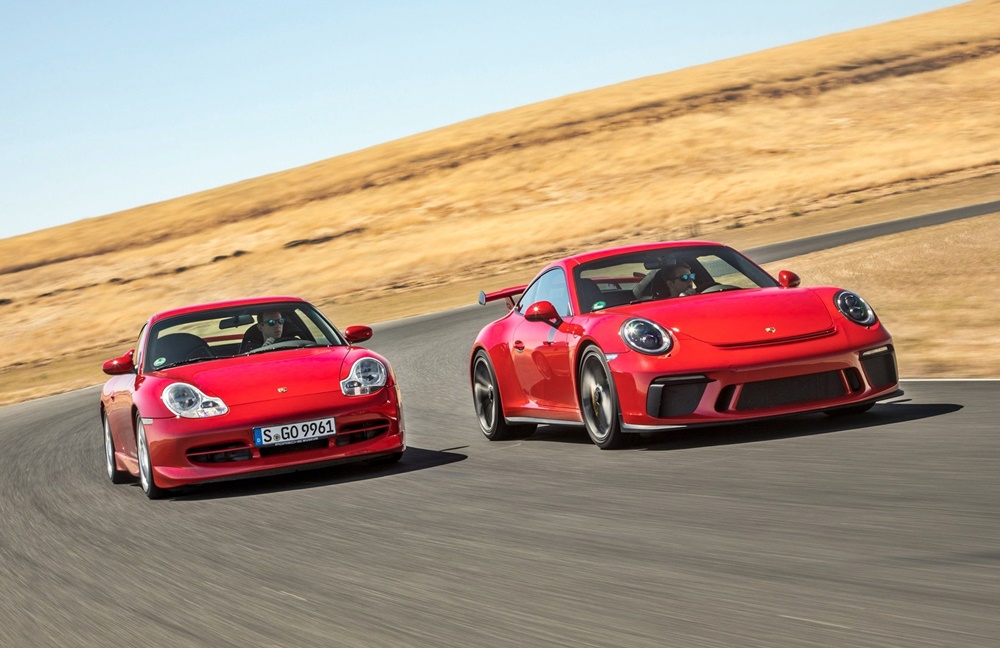
The first successor
4 years later, the GT3 received significant updates based on the facelifted 996 generation 911. Power grew to 381 ps, torque rose from 370 to 386 Nm, and the redline climbed to 8,200 rpm. This was possible by updating the engine with longer titanium connecting rods, lighter pistons, the variable camshaft adjustment system VarioCam, and lighter intake and exhaust valves.
In addition to a restyled fascia, a new rear wing and updated wheel design, this 2004 model featured wider front and rear tyres. Underscoring the effort of the Motorsport department to save weight wherever possible, the new wheel/tyre combination saved 1 kg in spite of the increase in size, thanks to flow-formed wheel technology.
Larger front brake rotors, up from 330 mm to 350 mm, and 6-piston calipers increased pad-to-rotor contact by about 40%. As an option, Porsche Ceramic Composite Brakes (PCCB) with carbon-ceramic brake rotors was available for the first time in the GT3, taken from the 996-generation 911 GT2.
Third generation of GT3
Based on the 997-generation of 911, a new GT3 was unveiled in 2006. Still powered by a 3.6-litre naturally-aspirated flat-6, the output was now 415 ps and the engine could spin at 8,400 rpm. The 6-speed transmission offered 15% shorter shift throws and a reduction of ratios for gears two through six, pairing well to power delivery of the engine.
To make full use of the increased power, the suspension was enhanced with divided control arms offering greater adjustment of camber angle. Additionally, Porsche Active Suspension Management (PASM) was offered as standard for the first time on the GT3, offering the capability of electronically adjusting the dampers. Wheel diameters grew to 19-inches, the size of the standard rear cast iron brake rotors increased to 350 mm, the optional PCCB rotors grew to 380 mm at the front axle, and Ultra-High Performance tyres (UHP) were mounted to further increase grip.
The 997 became the first 911 GT3 model to be equipped with a traction control system (TC), which complemented the standard limited slip differential by giving the driver greater control, particularly on slippery surfaces. The car was also fitted with a SPORT button for the first time, reducing backpressure in the exhaust and put the traction control system in a more dynamic mode.
Larger engine, faster lap times
For the 2010 model year, the GT3 received not only a visual update as part of the facelifted 997 generation but also a number of significant technical changes. For the first time, the engine displacement was no longer 3.6 but 3.8 litres with 435 ps and 430 Nm of torque
This generation featured even more technology directly adopted from motorsport, such as the new centre lock hubs for the 19-inch wheels which increased driving performance with lower rotating masses. At the same time, electronic stability control (ESC) complemented the traction control system introduced on the previous model, adding another layer of control for the driver. An optional front axle lift system was introduced for the first time, offering an additional 30 mm of ride height at the front axle to clear driveways and speed bumps.
The 991 generation GT3
Introduced in 2013 for the 2014 model year, the 911 GT3 based on the newly introduced 991-generation adopted one of the biggest advancements in performance and technology ever seen on a road car: the 7-speed Porsche dual-clutch transmission (PDK). It had already been available on the 911 Carrera and Turbo variants of the previous generation but was significantly modified to suit the characteristics of this race-bred model and fitted as standard.
The track performance of this latest GT3 also benefited from the new 991 platform. Track widths and body stiffness increased, PASM system advanced, and standard centre-lock wheels were made of forged aluminium for the first time while increasing to 20-inch diameter.
Rear axle steering was also added as standard for the first time on the GT3. This innovative technology, shared with the 918 Spyder and 911 Turbo, steered the rear wheels in opposite direction of the front wheels at speeds of up to 50 km/h to increase agility and reduce the turning circle. Over that speed, the system steered the rear wheels in tandem with the front wheels to promote stability, for example during a lane change at higher speeds.
Today…
7:12.7 minutes: The lap time of the current GT3 represents roughly 45 seconds of improvement at the ‘Ring compared to the original model. What a world of difference! The new 4.0-litre engine develops 500 ps and a 470 Nm.
Catering to the purists, a 6-speed manual transmission was re-introduced as a no-cost alternative to the standard 7-speed PDK. This is also the exclusive transmission for the GT3 with Touring Package, which was first shown in September 2017.
More capable and diverse than ever before, the 911 GT3 represents the beating heart of Porsche’s commitment to building pure, uncompromised sportscars.
Click here for other news and articles about Porsche on PISTON.MY.
Visit www.porsche.com.my to know more about the models available in Malaysia.


